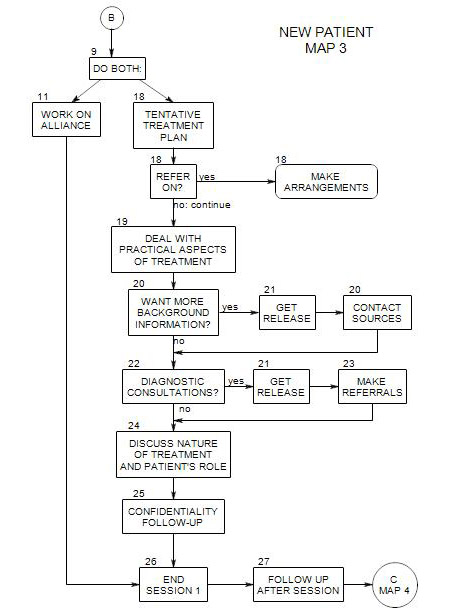-
Follows Section 14 Level of Care Decision on Map 2
In outpatient treatment, you attempt to help the patient overcome, manage, or adapt to his/her issues and symptoms without the use of intensive care or a restrictive environment. Most patients who come to a private psychotherapist or clinic are capable of continuing their usual lives and using the treatment as an and opportunity to deal with issues that interfere with living their lives.
The majority of cases involve meeting with a patient regularly and providing whatever psychotherapeutic treatment you determine to be appropriate and expect to be helpful.
Psychotherapy may include helping the patient understand him/herself, providing information, suggesting life changes, working with the patient to coordinate other aspects of treatment.
For these patients, the external arrangements you need to make are less sweeping than for people with more serious difficulties; but they are important.
RISK MANAGEMENT can involve any of the possibilities of Section 13, and possibly others. However, it is generally best to treat patients as co-planners of the case management issues.
For example, you can suggest that he/she call between sessions if he/she feels a need to talk with you; and describe what to expect if he/she makes the call [You’ll get my answering machine and I’ll call back within an hour, etc.]
This section leads on to Map 3 and Map 4 on the conduct of outpatient treatment. These in turn lead to more specific treatment suggestions found in maps on anxiety and panic, alcohol misuse, depression, and so on.

